Hidden chapel offers clue to refugee camp past
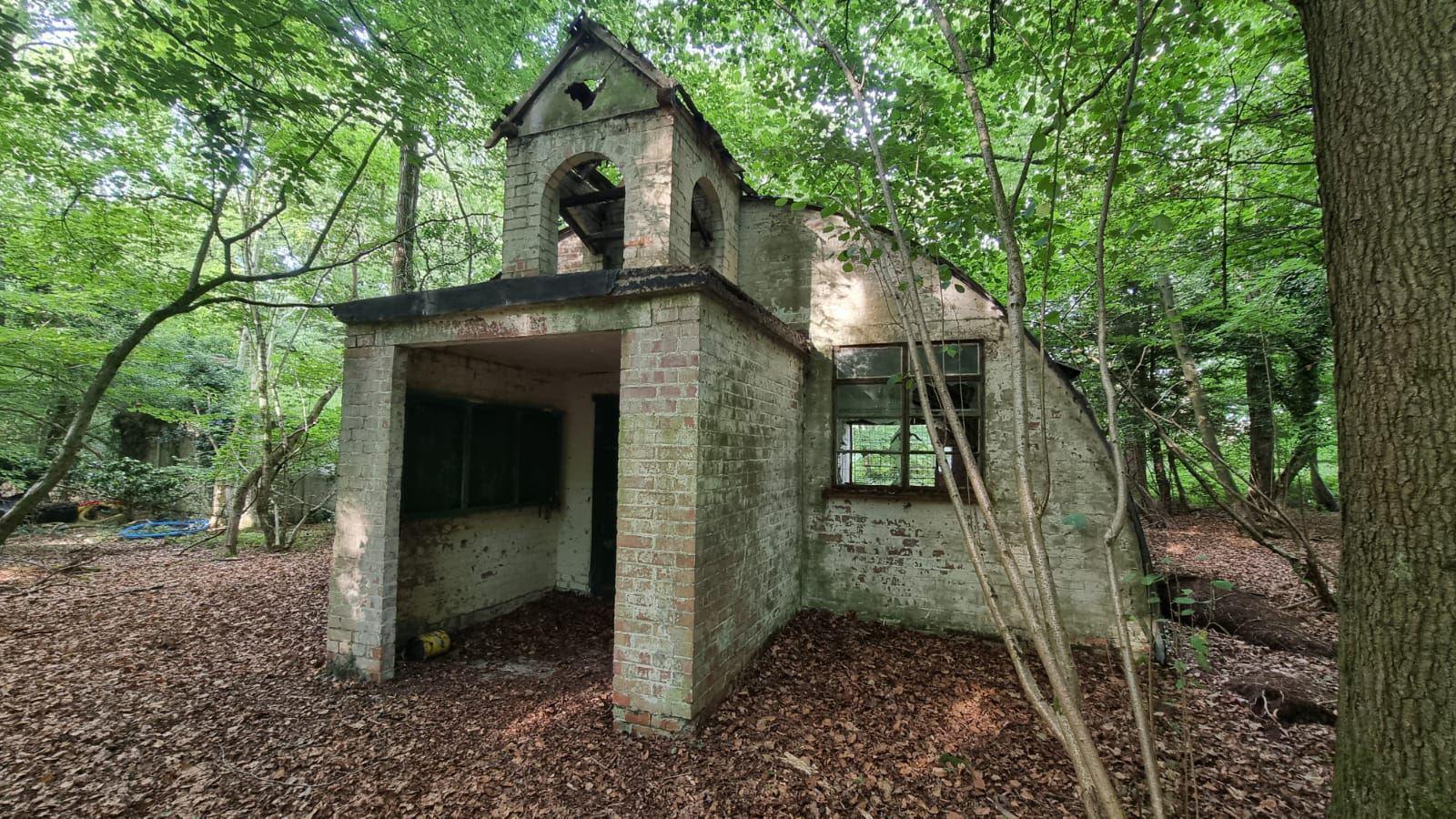
The chapel's stained glass windows were moved to a church in Reading when the camp was abandoned
- Published
An abandoned Catholic chapel in rural Oxfordshire is one of the last visible reminders of a refugee camp that once housed thousands of people after World War Two.
The Checkendon Polish camp – officially a resettlement hostel – became home to families who had fled Poland in the aftermath of the conflict.
Zbigniew and Basia Karpowicz spent their early childhoods living there. Now, alongside friend and local history enthusiast Graham Drucker, they are hoping to trace others who lived in the camp, or in a nearby one at Nettlebed.
Mr Drucker said they hoped to install a monument or plaque to commemorate the camp and those who lived and served there.
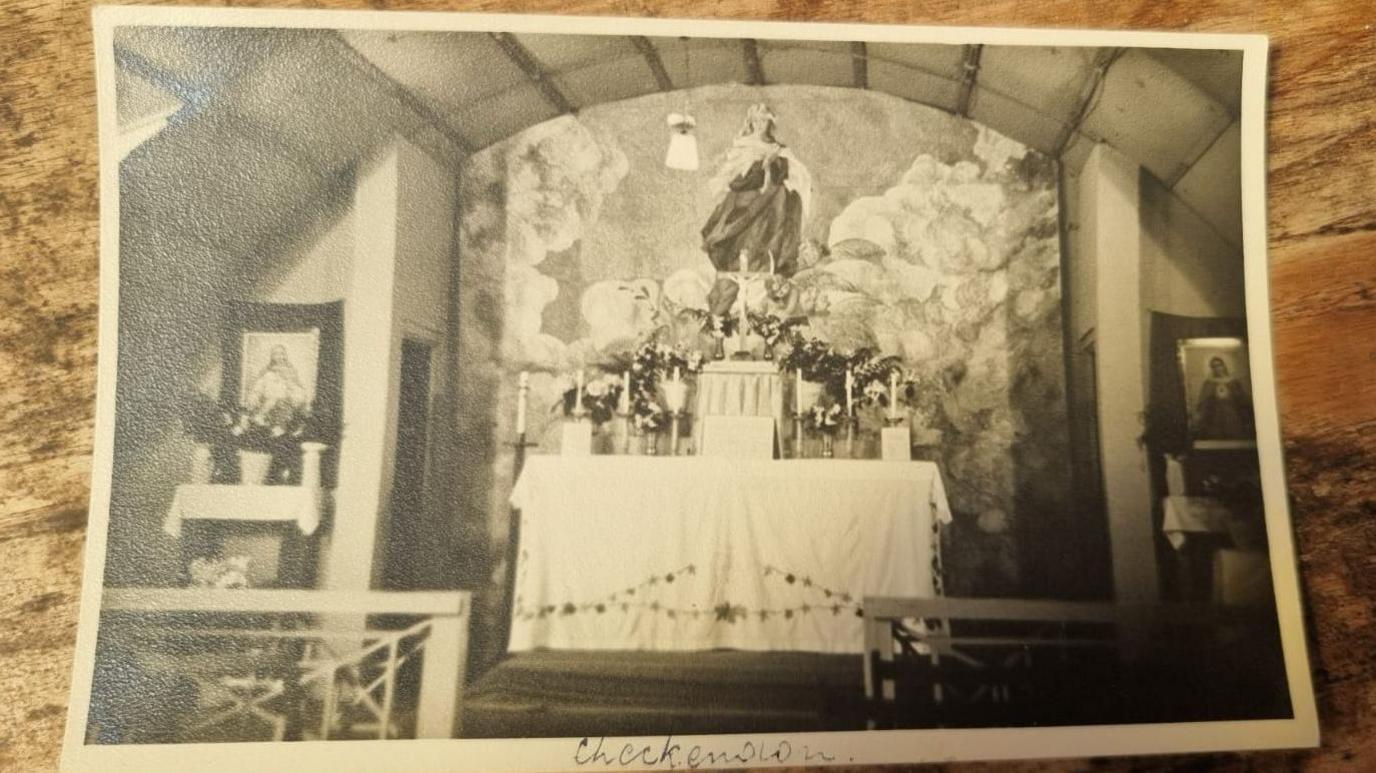
The camp was big enough to have its own chapel, as well as a cinema and several shops
Mr Ducker said the camp was thought to have been built in 1942 and served as a base for US soldiers in the run up to the D-Day landings.
It was later used as a hospital and then a prisoner of war camp for German and Italian soldiers.
But after the war, with their homes destroyed and nations under the control of the Soviet Union, millions of eastern Europeans found themselves in displaced persons' camps around the continent, waiting for the time they could return home.
Checkendon was one such camp, housing an estimated 2,500 Polish people on a site big enough to not only have a chapel, but also shops and a cinema.

The Karpowicz family, with Zbigniew as a baby, photographed outside their Nissen hut in Checkendon
Mr and Mrs Karpowicz were both born in the camp and christened in the chapel there. Both left with their families when the site closed in 1961.
They recalled "lovely" memories of the site, including playing in the bluebell woods and walking to the nearby Checkendon to go to the post office.
"For children this place was really quite idyllic. It was a Polish village in the middle of the beechwoods," said Mr Karpowicz, now 70.
But he said for his parents and grandparents, who lived in Checkendon for 12 years following a turbulent time in their nation's history, the experience was different.
"This was just another temporary place where they would live... like a road to nowhere," he said.
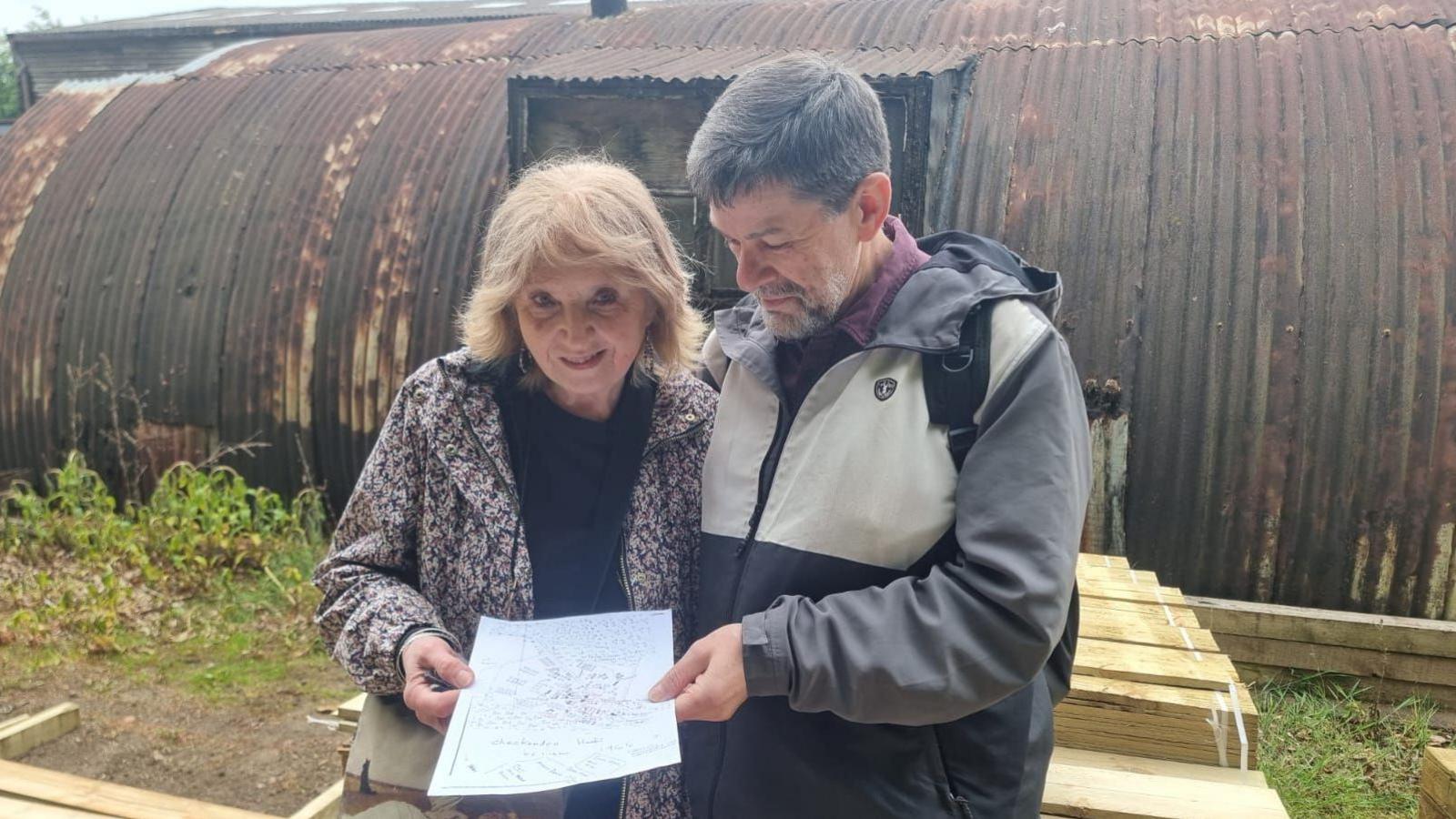
Mr and Mrs Karpowicz both lived in the camp until they were about five, although they did not meet until later
Mrs Karpowicz, now 69, and her family eventually moved to Reading, Berkshire.
Both she and Mr Karpowicz attended the Polish Sacred Heart Church in Reading and later got married.
Now closed, the camp fell into disrepair, and the stained glass windows from the chapel were moved to the Sacred Heart Church.
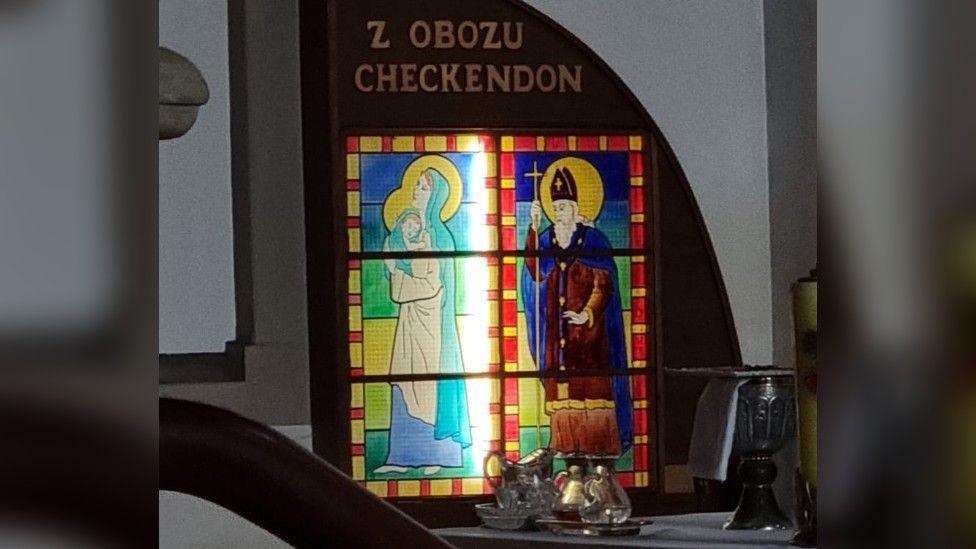
The stained glass from the chapel is now at Sacred Heart Church in Reading
Despite the site's important history, Mr Ducker said there was virtually nothing left of it - just a few abandoned Nissen huts and, for the eagle-eyed, carvings left on some of the surrounding trees.
"It's not even a ghost town - just isolated ghosty buildings," he said.
He added there was "next to zero" in the way of official records about the site and the people who lived there.
"Checkendon and its history has been forgotten," he said.
But the trio want to change that.
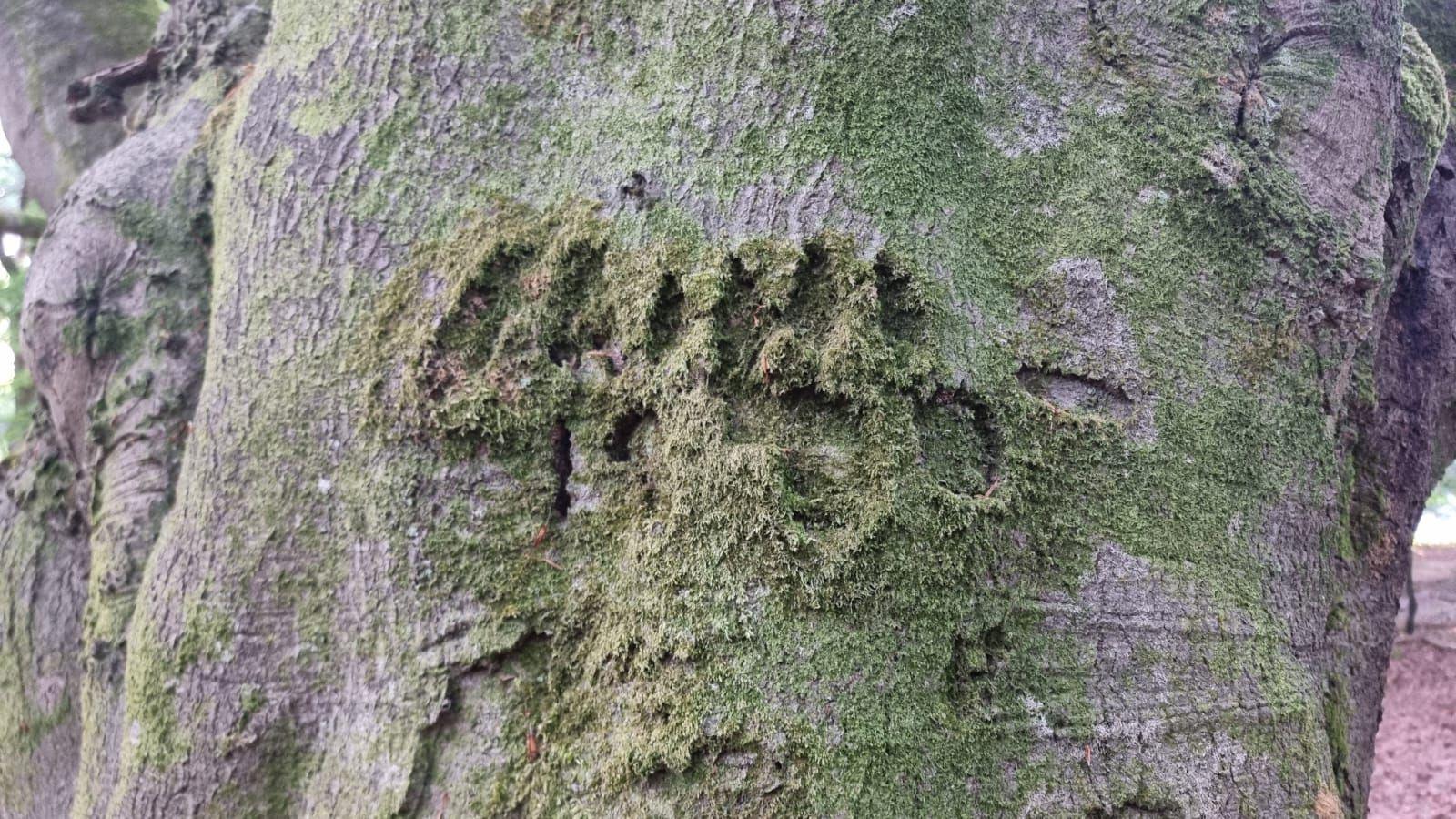
The year 1946 is carved into a tree, which Mr Ducker said was likely either written by a British soldier, a German PoW or one of the first Polish troops
Their plan, Mr Ducker said, was to host an event to mark next year's 80th anniversary of when Polish troops first came to guard the prisoners of war.
Another event would mark the anniversary of its official establishment as a resettlement camp in 2028.
He also said he wanted to create a roll of honour for the people who served and lived there, as well as a memorial to mark the site.
"Because the generation that endured the Second World War and post-war are largely dying out, I feel that it's time to do something to keep alive that memory of the unwritten heroic deeds," said Mr Ducker.
"[Checkendon] is so special... I think it deserves it."
He asked anyone who lived in the camp, or who knows or is related to someone who lived in the camp, to get in touch via the Commonwealth Family History Research society, external.
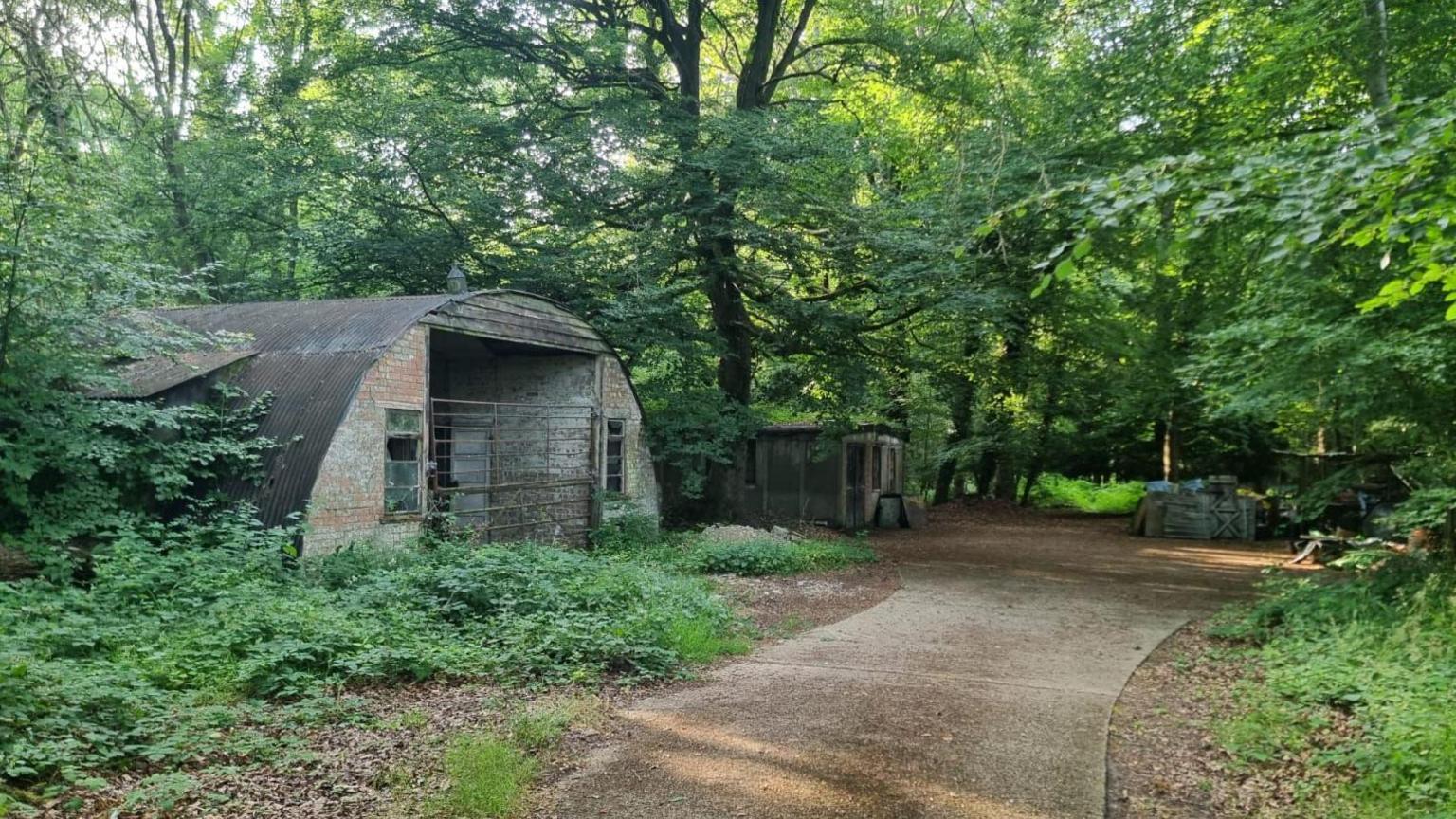
Little remains at the site of the camp now
Get in touch
Do you have a story BBC Berkshire should cover?
You can follow BBC Berkshire on Facebook, external, X (Twitter), external, or Instagram, external.
Related topics
- Published11 May 2015